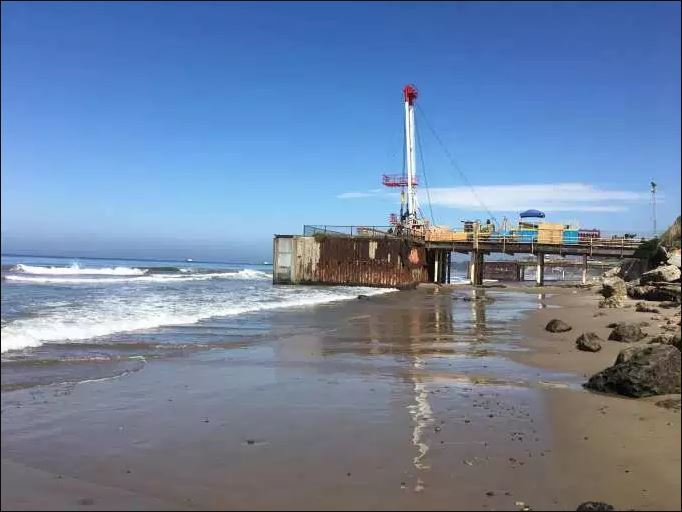The State Lands Commission is moving to decommission two oil wells not far off the coast of Goleta, in a development long sought by environmentalists.
The State Lands Commission held a public scoping meeting on June 24 for the public to provide input on the issues the commission should consider for the environmental impact report on the decommissioning of piers 421-1 and 421-2.
The project would take around six months to complete and happen in spring 2022. The State Lands Commission held two meetings on June 24 — at 2 p.m. and at 6 p.m. — for the public to provide comments.
The two wells that the project would decommission haven’t been in use since 1994. In accordance with the California Geologic Energy Management Division requirements, the wells were later “plugged and abandoned pursuant in May and September [of] 2019.” In addition to the two piers and caissons, the project would remove “other infrastructure, including two pipelines and the access road and supporting rock revetment.”
Eric Gillies, the assistant chief of the Environmental Planning and Management Division with the California State Lands Commission, led the meeting and said that they are currently within the scoping stage of the project and the next step will be to prepare and present the draft environmental impact report (EIR) and have additional public meetings for the public to voice concerns or speak to the project.
Gillies said that currently they are looking at the following issues: aesthetics, air quality, biological resources, coastal processes, cultural resources and tribal cultural resources, geology and soils, greenhouse gas emissions, hazards and hazardous materials, hydrology, water quality, land use, noise, transportation, environmental justice, and sea-level rise.
The public will be able to provide comments on this project until July 9. After that point, the EIR draft will be viewable for a 40-day period. A final EIR will be available around December.
During the 2 p.m. meeting, two people spoke during public comment. The first speaker, who identified themselves as Sean Anderson, spoke to a potential conflict with shorebird migration.
“Maybe that’s the kind of thing where the construction is designed into phases as opposed to a one- to six-month [period]. Maybe there’s a way to break it up into two- or three-month segments or something of that nature,” Anderson suggested as a potential solution.
The last comment was placed in the Zoom chat by Jacqueline Rosa, who asked about tribal cultural resources.
“How do you plan to connect with local tribal nations to communicate and mitigate potential impacts culturally important to their communities?” Rosa wrote.
The next public meeting will likely be after the draft EIR is published in September.
Support the Santa Barbara Independent through a long-term or a single contribution.

